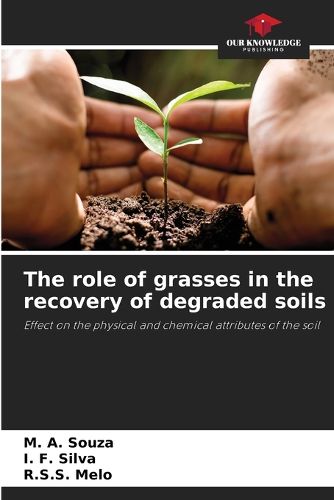Readings Newsletter
Become a Readings Member to make your shopping experience even easier.
Sign in or sign up for free!
You’re not far away from qualifying for FREE standard shipping within Australia
You’ve qualified for FREE standard shipping within Australia
The cart is loading…






Perennial grasses, due to their fasciculated root system, are widely used in soil recovery in degraded areas. The objective of this study was to verify the physical and chemical attributes of a Red Nitossolo soil cultivated with grasses, with and without mineral fertilization, at different sampling depths after four years of cultivation. The experiment was conducted at the EMEPA Experimental Station in Alagoinha, Paraiba. The design was randomized blocks, with four replicates in sub-subdivided plots with the treatments, pangola grass and brachiaria ruziziensis in the presence and absence of NPK mineral fertilization, at soil sampling depths (0-10, 10-20, and 20-30 cm). In the laboratory, the samples were subjected to physical and chemical soil determinations. The results obtained show that the use of grasses contributed to a reduction in soil density and an increase in total porosity. Brachiaria grass provided better aggregate stability values. The grasses promoted an increase in the levels of organic matter, P, K, and CTC, with a greater effect on the surface layer.
$9.00 standard shipping within Australia
FREE standard shipping within Australia for orders over $100.00
Express & International shipping calculated at checkout
Stock availability can be subject to change without notice. We recommend calling the shop or contacting our online team to check availability of low stock items. Please see our Shopping Online page for more details.
Perennial grasses, due to their fasciculated root system, are widely used in soil recovery in degraded areas. The objective of this study was to verify the physical and chemical attributes of a Red Nitossolo soil cultivated with grasses, with and without mineral fertilization, at different sampling depths after four years of cultivation. The experiment was conducted at the EMEPA Experimental Station in Alagoinha, Paraiba. The design was randomized blocks, with four replicates in sub-subdivided plots with the treatments, pangola grass and brachiaria ruziziensis in the presence and absence of NPK mineral fertilization, at soil sampling depths (0-10, 10-20, and 20-30 cm). In the laboratory, the samples were subjected to physical and chemical soil determinations. The results obtained show that the use of grasses contributed to a reduction in soil density and an increase in total porosity. Brachiaria grass provided better aggregate stability values. The grasses promoted an increase in the levels of organic matter, P, K, and CTC, with a greater effect on the surface layer.